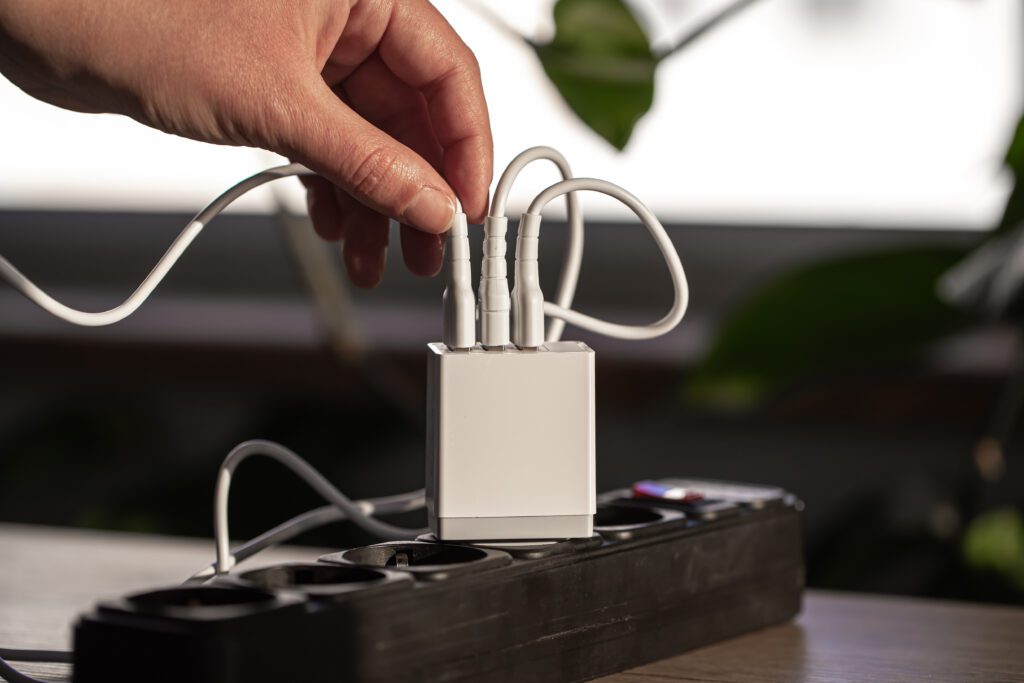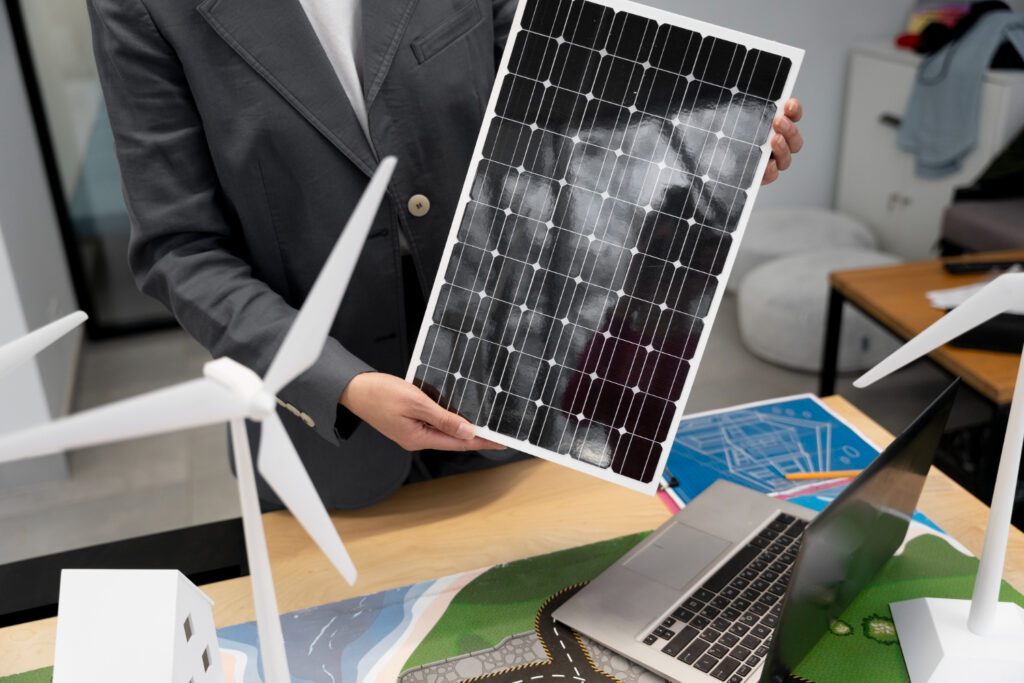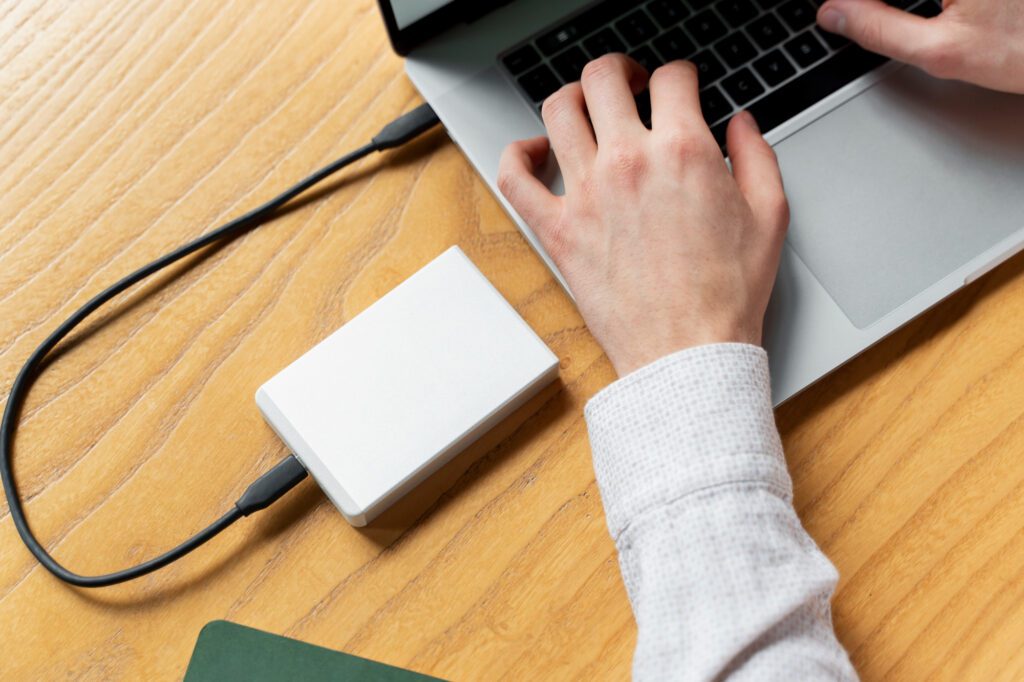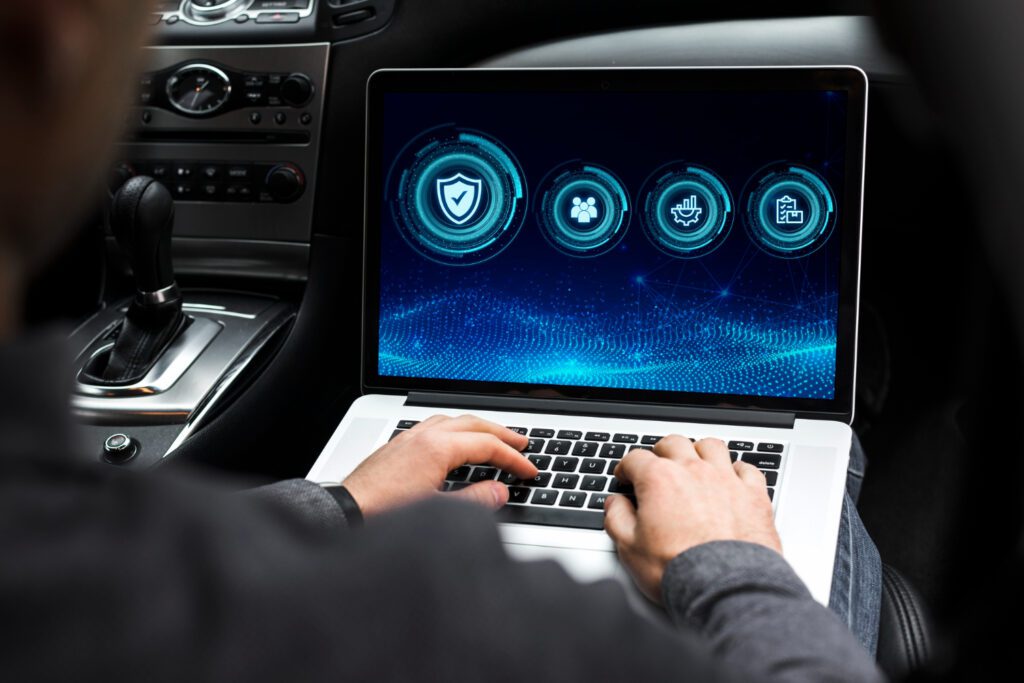In this quick moving universe of today, PCs are turning into a fundamental piece of our day to day presence. A drained battery on your PC can be a major issue whether you use it for business, play, or just to keep associated. Be that as it may, what might occur if you somehow happened to wind up without accessibility of your PC charger? Have confidence, there are alternate ways of charging your PC that can make all the difference. We will take a gander at a few strategies for how to charge a laptop without a charger in this article.
Table of Contents
Using a Universal Power Adapter

When you are in aa search of how to charge a laptop without a charger, using a Universal Power Adapter to charge your laptop without a charger is a workable solution. Universal power adapters are a flexible choice because they are made to fit a variety of laptop models. The following provides a thorough guide on using a universal power adapter:
1. Selecting a Compatible Universal Power Adapter:
– The first thing to do is choose a universal power adapter that works with the voltage and connector on your laptop. Generally, universal power adapters have many replaceable tips to accommodate different laptop models. This is how you do it:
– Identify Your Laptop’s Voltage and Connector: You must be aware of the voltage requirements and connector type used by your laptop. Usually, the user manual or the laptop’s label contain this information. It’s important to get this right because using an incorrectly voltaged or connected adapter can harm your laptop.
– Choose the Appropriate Tip: Once you are aware of your laptop’s requirements, choose the universal adapter kit’s tip that corresponds with your laptop’s connector. For ease of use, these pointers are frequently labeled and color-coded.
– Set the Voltage: Most universal power adapters come with a switch for adjusting the voltage. Make sure the voltage is set to the right amount for your laptop. Verify the specifications on your laptop again as setting the incorrect voltage might do major harm.
2. Step-by-Step Guide:
– You may use the universal power adapter to charge your laptop now that you have the appropriate voltage settings and suitable tip. Take these actions:
– Turn Off Your Laptop: Be certain your laptop is off before plugging in the adapter. By doing this, the chance of an electrical shock and other possible problems during the connection are reduced.
– Connect the Tip to the Adapter: Put your chosen tip into the universal power adapter. This is usually a simple step that doesn’t involve any instruments.
– Plug the Adapter into Your Laptop: Gently insert the adapter’s tip into the charging port on your laptop. To create a secure connection, make sure it is seated correctly.
– Connect the Adapter to a Power Source: Connect the universal power adapter to any power outlet or power strip, among other sources of power. Your laptop should now be able to receive power from the adapter.
– Turn On Your Laptop: Switch on your laptop once all the connections have been made. Just like it would with the original charger, it ought to begin charging.
Whenever you have no access to how to charge a laptop without a charger, you can still charge your laptop by using a universal power adapter. To avoid any possibility damage to your laptop, it is imperative that you closely monitor the voltage settings and compatibility. When used properly, this technique can maintain the battery life of your laptop and let you carry on with your job or other activities uninterrupted.
How to Charge a Laptop Without a Charger by Using USB-C Port

The growth of modern laptops and their numerous connecting possibilities has led to an increase in the popularity of charging laptops using USB-C (Universal Serial Bus Type-C) ports. Because USB-C connections are well-known for transferring power, data, and video, they are a practical option for charging. This is a comprehensive guide explaining how to charge a laptop without a charger using a USB-C port:
1. Laptops with USB-C Ports: Make sure your laptop has a USB-C connector before trying to charge it with one of these. Not every laptop can connect via USB-C. Because of its adaptability, this approach has grown into a norm for many manufacturers and is most typically used in Chromebooks, ultrabooks, and modern laptops.
2. Select the Right Cable: To charge your laptop using USB-C ports, you’ll need a USB-C cable. Selecting a compatible, high-quality cable is crucial. It’s possible that low-quality cords won’t supply your laptop an adequate charge.
3. Power Source: You need a power source that can supply enough power through the USB-C connection in order to charge your laptop via USB-C. A power bank with a USB-C output, a USB-C power adapter, or another laptop with a USB-C connection can all serve as this source. The power supply need to possess enough wattage to fulfill the charging requirements of your laptop.
4. Connecting Your Laptop: Connect the USB-C cable to the USB-C port on your laptop after obtaining the necessary cable and power supply. A tight fit on the cable will provide a safe connection. This is usually a reversible connection, so it’s more convenient because you can plug it in either way.
5. Charging: The laptop should detect the power source as soon as the cable is inserted, and charging should start right away. Your laptop can display a notification telling you that it needs to be charged. The percentage of battery life on the laptop should begin to rise.
6. Data Transfer: In addition to being functional for data transfer, USB-C connections are multipurpose. If your laptop has this capability, you can transmit data across devices—such as external hard drives, smartphones, or other laptops—while it’s charging.
7. Charging Speed: The power source’s wattage and the laptop’s charging capacity can both affect the charging speed. Your laptop will charge faster from power sources with higher wattages. Note that certain computers can be charged using USB-C at maximum speed; for information on charging speed, see the specs of your laptop.
8. Disconnect Safely: Just unplug the USB-C connection from the laptop and the power source to cease charging your laptop. It’s critical to disconnect securely to avoid any possible electrical problems.
9. USB-C Compatibility: Remember that not every laptop can use every USB-C connection or power source. When trying to charge your laptop using USB-C, be sure it is compatible with the power delivery profiles that it needs.
10. Charging While Off: Even with your laptop turned off as well as in sleep mode, you can still charge it with USB-C. This is especially useful for charging your laptop’s battery when it’s not in use.
Solar Charging

Using solar power to charge your laptop is a creative and environmentally responsible way to take advantage of the sun’s energy. This technique comes in handy in the outdoors, in isolated areas, and during blackouts. This is a thorough description of laptop solar charging:
1. Concept of Solar Charging:
– Photovoltaic (PV) panels are used in solar charging to transform sunlight into electrical energy. Photons from sunlight are captured by the solar cells of these panels and transformed into useful electricity.
2. Solar Charger Components:
– Typically, a solar charger is made up of the following parts:
– Solar Panels: The solar energy that these panels collect comes from numerous solar cells. They are always at your demand in different power levels and sizes.
– Charge Controller: To guard against overcharging and preserve the battery life of your laptop, the charge controller controls the voltage and current that the solar panels send to the device.
– Battery (Optional): You may charge your laptop with certain solar chargers even if the sun isn’t shining because they include a built-in battery for energy storage.
– Output Ports: To charge your device, solar chargers typically include USB or other ports designed specifically for laptops.
3. Selecting the Right Solar Charger:
– Take into account the following elements when selecting a solar charger for your laptop:
– Wattage: Make sure the solar charger has enough wattage to match the power needs of your laptop. Powerful panels charge more quickly.
– Portability: Choose a charger based on how much mobility you require. Lightweight, foldable designs are perfect for outdoor use.
– Compatibility: Verify that the adapters or connectors the charger includes fit the charging port on your laptop.
– Built-in Battery: You can select a solar charger with an inbuilt battery for energy storage, depending on your demands.
4. Setting Up Solar Charging:
– To utilize a solar charger efficiently, take the following actions:
– Align the solar panel with the sun: Orient the solar panel to capture as much sunlight as possible during the day. To get the most exposure, change the angle.
– Connect the laptop: Connect your laptop to the solar charger using the proper connector. To save electricity, make sure the laptop is either off or in sleep mode.
– Monitor the charging: Pay attention to the battery life of your laptop. It could take a while to get a useable charge using solar power because it usually charges more slowly than with conventional techniques.
5. Efficiency and Limitations:
The weather, the standard of the solar cell, and the panel’s angle and orientation toward the sun are some of the variables that affect how efficient solar charging is. Because solar charging depends on sunlight, it might not be appropriate for frequent use. The process of charging may be slowed down by overcast or short days. When using solar charging, it’s important to be patient and prepare ahead of time to make sure your laptop has enough power for your needs.
6. Environmental Benefits:
– Since solar charging produces clean, renewable energy without emitting greenhouse gases, it is an environmentally friendly choice.
. By using solar charging, you may lessen your carbon footprint and dependency on conventional electricity sources.
Power Banks

Power banks, sometimes referred to as external batteries or portable chargers, are useful and necessary gadgets for contemporary living. These little devices are now common place and provide a practical way to keep our mobile devices—such as laptops, smartphones, tablets, and more—charged and functional when we’re on the go. We’ll go over power banks, their various uses, how they operate, and things to think about before purchasing one in this comprehensive overview.
1. What Is a Power Bank?
A portable, rechargeable battery pack containing one or more USB ports is called a power bank. Its lithium-ion or lithium-polymer batteries hold electrical energy that can be used to charge a variety of modern gadgets.
2. How Do Power Banks Work?
Through internal battery storage, power banks function by storing electrical energy. A suitable cable is used to connect a device, such as a laptop or smartphone, to the power bank. The power bank then uses its stored energy to charge the connected item. Direct current (DC) from the power bank is converted to the necessary voltage for the device.
3. Types of Power Banks:
– Standard Power Banks: These are the most popular and are available in several capacities, which are expressed in milliampere-hours, or mAh. They are intended to be used for smaller devices such as tablets and smartphones.
– Laptop Power Banks: These offer longer usage thanks to their increased capacity and voltage output, which makes them ideal for charging laptops.
– Solar Power Banks: These solar-panel equipped power banks can use sunlight to recharge themselves, which then charges your gadgets. They are perfect for usage outside.
4. Key Features:
– Capacity: The capacity of a power bank, expressed in mAh or watt-hours (Wh), dictates how many charges it can deliver. It can hold more charges the larger its capacity.
– Output Ports: Multiple USB ports on power banks enable you to power several gadgets at once.
– Input Ports: The power bank itself is recharged using these ports. Micro-USB and USB-C are typical input choices.
– Fast Charging: Fast charging is supported by certain power banks, which can drastically cut down on how long it takes for your gadgets to charge.
– Pass-Through Charging: With the help of this feature, you can charge the power bank and simultaneously charge another device.
– Safety Features: Safe charging requires the presence of short-circuit, overcurrent, and overvoltage protections.
– Size and Weight: To make sure the power bank is portable and suitable for your needs, take into account its weight and size.
5. Choosing the Right Power Bank:
– Device Compatibility: Make sure the devices you intend to charge are compliant with the power bank’s connections and output voltage.
– Capacity: Select a capacity based on what you require. A 10,000mAh battery is usually enough for a smartphone, but a laptop can need more.
– Portability: Whether it’s for outdoor activities, travel, or everyday commuting, choose a weight and size that suit your needs.
– Fast Charging: Seek for a power bank which backs fast-charging technologies such as Power Delivery or Qualcomm Quick Charge if you desire rapid charging.
– Price: Think about your spending limit; power banks vary greatly in cost depending on their features and capacity.
6. Applications of Power Banks:
– Charging on the Go: When traveling, commuting, or engaging in outdoor activities, keep your gadgets charged.
– Emergency Power: In case of emergencies or power shortages, they function as backup power sources.
– Outdoor Adventures: Perfect for outdoor activities like as hiking, camping, and other situations where conventional power sources are not available.
– Business and Productivity: Continue to be productive during lengthy conferences, meetings, or business travels.
– Entertainment: Charging your devices while on the go will ensure constant enjoyment during lengthy flights or road trips.
Car Charger

An automobile charger, alternatively referred to as an automotive power inverter or car inverter, is a gadget that facilitates the on-the-go charging of electronic devices such as laptops. Travelers, remote workers, and anyone who needs to charge their laptop while driving will find it to be a useful tool. Here is a thorough description of how to charge a laptop without a charger and operating an automobile charger:
How Car Chargers Work:
1. Power Source: Car chargers connect to the power source in your car, which is typically the cigarette lighter socket. Direct current (DC) electricity from your car’s electrical system is available through these outlets.
2. Inverter: An inverter, which is part of the car charger, is in charge of transforming the DC power from the vehicle into alternating current (AC) power, which is comparable to the power in your home. Most electrical items, including laptops, need to be charged with AC power.
3. Power Output: Usually, car chargers offer a range of power output choices expressed in watts. The power output need to match the specifications of your laptop. To prevent underpowered or overpowered charging, which could damage your laptop, it’s critical to balance the charger’s output to the power requirements of your laptop.
Using a Car Charger for Your Laptop:
1. Select a Suitable Car Charger: Select a car charger based on the power requirements of your laptop. To find out the necessary voltage and wattage, see the instructions that came with your laptop or the power adapter.
2. Locate the Car Power Outlet: The power outlet, which is frequently identified as a cigarette lighter socket, is found next to the dashboard of most cars. Use this outlet to plug in the vehicle charger.
3. Connect the Laptop Charger: Connect your laptop charger or adapter to the car charger’s AC socket after it has been plugged in and turned on. This enables your laptop to receive the required AC power from the car charger.
4. Start the Car: Start your car’s engine to guarantee a steady flow of power. When the engine is running, the electrical system of the car provides a consistent power source. It’s generally not advised to charge your laptop when the car is off because it could drain the battery.
5. Monitor Charging: As soon as everything is correctly connected, your laptop should begin charging. To make sure the laptop is getting power, you can look at the battery indicator.
6. Safety Precautions: It’s crucial to take safety precautions when utilizing a car charger. Make sure everything is tight, and don’t put too much strain on the car’s electrical system. Overloading might harm your laptop or the charger and cause power problems in your car. Take care not to trip over cables or let them get in the way of your drive.
7. Charging Time: The battery life of your laptop, the power output of the car charger, and the power consumption of the laptop will all affect how long it takes to charge. Have patience and keep an eye on your laptop while it charges.
Creative Methods

Unconventional techniques like creative laptop charging ways can be useful in situations where you don’t have a charger. They might not be employed as frequently as more conventional techniques, but in some circumstances, they can be very successful. Here’s a thorough breakdown of inventive laptop charging techniques:
1. Hand-Crank Generators: Portable gadgets known as hand-crank generators produce electricity when a crank is turned. When you’re in an off-grid area without access to a power source or in an emergency, these are fantastic. You just need to use an appropriate adapter to connect your laptop to the generator in order to use them. You may create power to charge your laptop by rotating the crank. Larger laptops would need a lot of physical work, but these generators are particularly helpful for little, low-power laptops.
2. Pedal-Powered Chargers: Similar to hand-crank generators, pedal-powered chargers work by having you pedal, much like a stationary bike, in place of turning a crank. They’re frequently utilized in outdoor or camping environments. Your laptop can be charged by converting the kinetic energy you expend while pedaling into electrical energy. Although this method works well, it can be physically taxing and the rate of charging might not be as quick as with conventional ways.
3. Portable Generators: Compared to hand-crank generators, portable generators are more powerful and larger. They can be powered by solar energy, propane, or gasoline, among other fuels. Laptops and other electrical gadgets can be consistently charged by these generators. They are often not the most environmentally friendly choice, though, and they may be hefty and noisy.
4. Thermoelectric Generators: Temperature differentials are used by thermoelectric generators to produce energy. Usually, these generators are utilized for camping or other survival scenarios. Electricity is produced by putting the generator’s one end in a cold source, like a body of water, and its other end in a heat source, like a campfire. A laptop can be charged using this electricity, however it’s not the quickest or most effective way.
5. Wind Generators: Utilizing wind turbines or generators, electricity can be produced from wind energy. You can use a portable wind generator to charge your laptop if you’re in a windy place. One benefit of these generators is that they offer a clean, renewable energy source. They do, however, need a steady wind to be functional and can be really enormous.
6. Bicycle-Powered Chargers: Attached to a bicycle, these chargers function similarly to pedal-powered ones. A generator mounted on the bike’s wheel generates electricity while you ride. For long-distance riders who wish to charge their laptops while traveling, this approach is perfect.
7. Handheld Solar Panels: Laptops may be charged by sunlight using portable solar panels made for outdoor use. These panels are transportable since they can be rolled up or folded. Although solar panels are a greener choice, they require sunshine to charge, thus in the event of cloud cover or at night, charging may take longer.
8. Hydroelectric Chargers: Hydroelectric chargers can turn the energy of moving water into electricity if there is a supply of flowing water nearby. Camping or isolated areas with access to a river or stream are better suited for these chargers.
It’s important to remember that unconventional laptop chargers could not be as effective as imaginative ones. The approach and the environment can have a big impact on the charging speed. Furthermore, these techniques are frequently more appropriate for off-grid or emergency conditions than for daily use.
To safeguard the safety of your laptop, make sure you read the manufacturer’s instructions carefully and proceed with caution before using any of these inventive techniques. Additionally, before using any one technique as your main charging solution, take into account its limitations and potential threats.
Safety Precautions

When using alternate means to charge a laptop, safety considerations are essential. These safety measures guard your laptop, guarantee your protection, and avert any possible mishaps or harm. The following provides a thorough breakdown of safety measures to take when charging your laptop without a charger:
1. Secure Connections: Make sure that every connection is safe and plugged in properly at all times. Power oscillations brought on by loose connections have the potential to harm your laptop or the charging apparatus.
2. Voltage Compatibility: Make sure the voltage of any power bank, universal power adapter, or other charging method you use is compliant with the specifications of your laptop. Using the incorrect voltage might cause your laptop to overheat or possibly short circuit.
3. Connector Compatibility: Make sure the connector you’re using, whether it be a universal power adapter or something else entirely, fits the particular connector on your laptop. The chance of damage to the laptop’s charging port exists when an incompatible connector does not fit properly.
4. Follow Manufacturer Guidelines: When charging your laptop, make sure you read and abide by the manufacturer’s instructions. The power needs and charging techniques of various laptops vary. Not only may using the wrong technique be unproductive, but it can also damage your laptop.
5. Check for Overheating: When charging, pay attention to the laptop’s temperature. The laptop’s battery or other components may be harmed by overheating. If the laptop is getting too hot, you might want to unplug the charger and let it cool down.
6. Avoid Wet Conditions: Make sure your laptop and the charging apparatus stay dry before utilizing any kind of charging approach. Electronics and water don’t mix well, and moisture can cause short circuits that could even destroy your laptop.
7. Don’t Overload Power Sources: Take care not to overtax the power supply while using an inverter or car charger. Overloading may result in problems with the power supply in your car as well as harm to the laptop or charger.
8. Unconventional Sources: Be mindful that if not handled properly, inventive solutions like pedal-powered chargers or hand-cranked generators could be dangerous. Always heed the directions given, and proceed with caution.
9. Fire Safety: Make sure nothing combustible is located close to where you have your charging setup. Keep the area free because there could be a fire threat due to overheating or a short circuit.
10. Regularly Inspect Equipment: Check the wear and tear on your charging equipment on a regular basis. Breakage of cables or adapters may pose a risk. In the event that damage is discovered, replace the equipment right away.
11. Follow Local Regulations: There can be rules or requirements unique to your location regarding electronic gadgets. To protect yourself, abide by any local laws.
You can use alternate means to charge your laptop without risking harm to your costly item or endangering your safety by following these safety guidelines. Always put safety first, check your equipment twice, and select the charging option that best fits your needs and the specifications of your laptop.
Conclusion
It is possible to how to charge a laptop without a charger, albeit it might not be as simple as using the original one. You can continue to remain connected even if your charger is missing by using a power bank, USB-C charging, solar charging, universal power adapters, or even the power source in your car. Always put safety first and use the approach that best fits your requirements and situation. Till now you must have got the answer for how to charge a laptop without a charger. So all the best!
FAQs

1. Can I use any universal power adapter for my laptop?
To prevent damage, make sure the universal power adapter you select is compatible with the voltage and connector of your laptop.
2. How fast can I charge my laptop using a power bank?
The power bank’s output and your laptop’s power needs determine the charging pace. Power banks with a large capacity and an appropriate output can swiftly charge your laptop.
3. Are there specific power banks for laptops?
Indeed, power banks with the required connectors and output voltage exist that are made specifically to charge laptops.
4. Is solar charging efficient for laptops?
Although it depends on the solar panel’s quality and the amount of sunlight available, solar charging can be effective. It might not be the best for frequent, intensive use.
5. Are there any risks associated with unconventional charging methods?
Unconventional methods do not always work with all laptop models, and there may be safety issues associated with them. Always use caution and adhere to product instructions.
